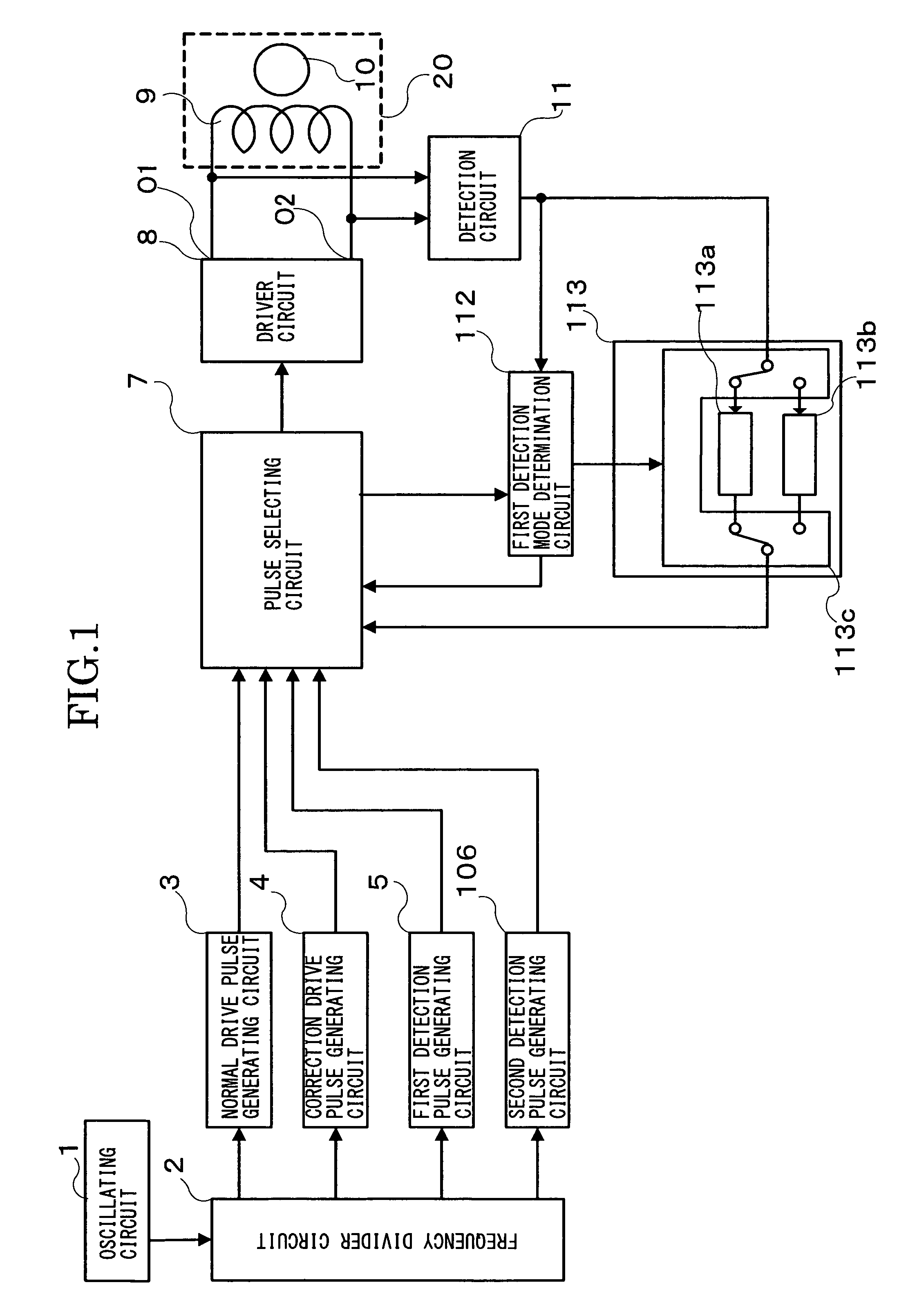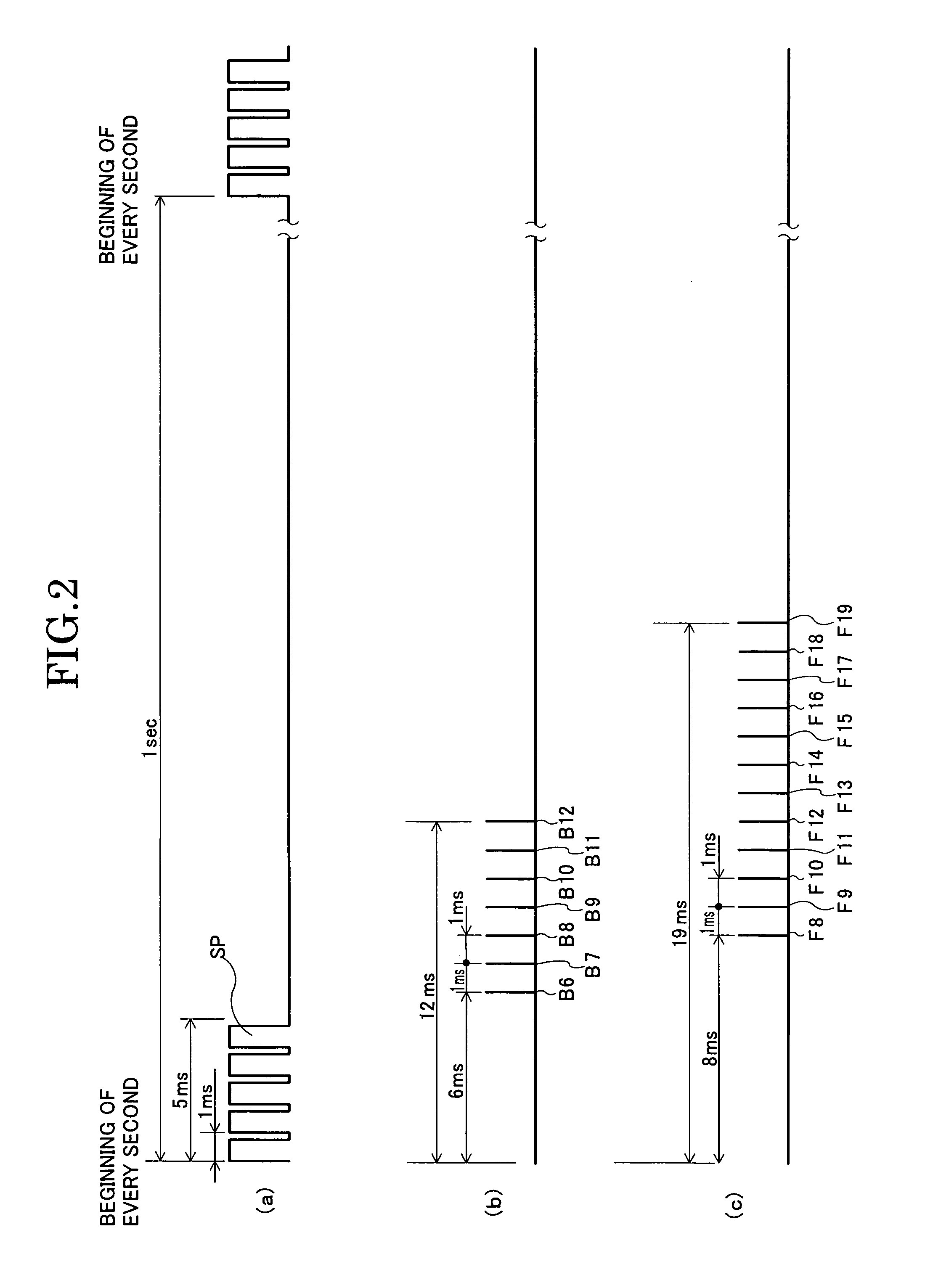Electronic clock
a technology of electronic clocks and clocks, applied in the direction of generating/distributing signals, dynamo-electric converter control, horology, etc., can solve the problems of increasing current consumption unnecessarily, and affecting the operation of the clock. , to achieve the effect of improving the flexibility of second hands available, accurate determination of rotation, and advantageous design techniqu
- Summary
- Abstract
- Description
- Claims
- Application Information
AI Technical Summary
Benefits of technology
Problems solved by technology
Method used
Image
Examples
first embodiment
[0086]Hereinafter, a first embodiment of the present invention will be described in detail based on the drawings. The first embodiment is an example of changing the maximum number of detection trials for a detection signal in the second detection mode, based on a determination time for determining the presence or absence of a detection signal in the first detection mode, thereby changing a determination period of the detection signal. FIG. 1 is a block diagram showing a circuit configuration of the electronic clock of the first embodiment. FIG. 2 is a waveform diagram of pulses generated by the circuit of an electronic clock of the first embodiment. FIG. 3 is a diagram of current waveforms and voltage waveforms generated in a coil when a pointer having a large moment of inertia is attached to the electronic clock of the first embodiment. FIG. 4 shows one example of diagrams of current waveforms and voltage waveforms when a rotor of the electronic clock of the first embodiment fails ...
second embodiment
[0106]Next, a second embodiment of the present invention will be described in detail based on the drawings. The second embodiment is an example in which a cycle of detection pulses in the second detection mode is changed in accordance with determination time to determine the presence or absence of a detection signal in the first detection mode, and thereby a determination period of the detection signal is changed. FIG. 8 is a block diagram showing a circuit configuration of an electronic clock of the second embodiment. FIG. 9 is a waveform diagram of pulses generated by the circuit of the electronic clock of the second embodiment. FIG. 3 is a diagram of current waveforms and voltage waveforms (the same drawings as those of the first embodiment) generated in the coil when a pointer having a large moment of inertia is attached to the electronic clock of the second embodiment. FIG. 10 shows one example of diagrams of current waveforms and voltage waveforms generated in the coil when th...
third embodiment
[0122]Next, a third embodiment of the present invention will be described in detail based on the drawings. The third embodiment is an example of changing a cycle of detection pulses on some of the detection signals in the second detection mode in accordance with detection conditions in the first detection mode. FIG. 12 is a block diagram of a circuit configuration of the electronic clock of the third embodiment. FIG. 13 is a waveform diagram of pulses outputted by the circuit of the electronic clock of the third embodiment. FIG. 3 is a diagram of current waveforms and voltage waveforms (the same drawings as those of the first embodiment) generated in the coil when the pointer having the large moment of inertia is attached to the electronic clock of the third embodiment. FIG. 14 is a diagram of current waveforms and voltage waveforms when the rotor of the electronic clock of the third embodiment fails to rotate. Components that are the same as those described in the conventional exam...
PUM
 Login to View More
Login to View More Abstract
Description
Claims
Application Information
 Login to View More
Login to View More - R&D
- Intellectual Property
- Life Sciences
- Materials
- Tech Scout
- Unparalleled Data Quality
- Higher Quality Content
- 60% Fewer Hallucinations
Browse by: Latest US Patents, China's latest patents, Technical Efficacy Thesaurus, Application Domain, Technology Topic, Popular Technical Reports.
© 2025 PatSnap. All rights reserved.Legal|Privacy policy|Modern Slavery Act Transparency Statement|Sitemap|About US| Contact US: help@patsnap.com



